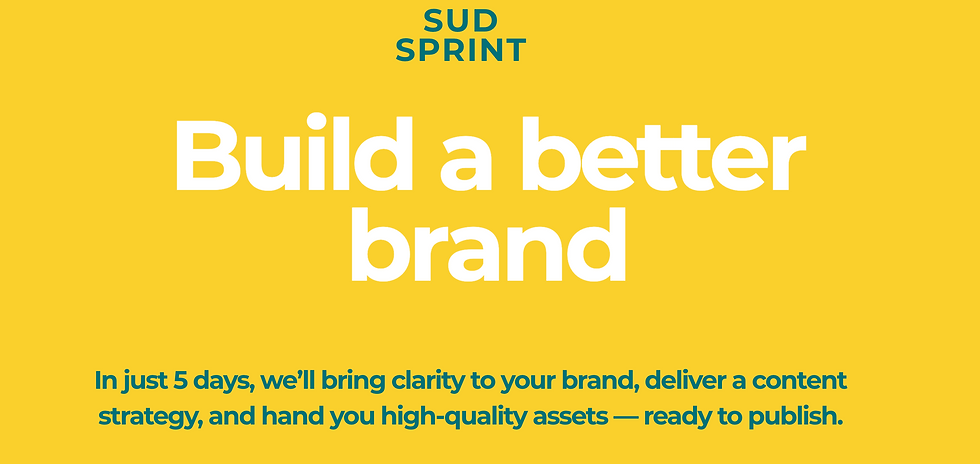Ads on Meta and Google - The ultimate guide
- Catalina Bertón
- 12 abr 2024
- 4 Min. de lectura
Actualizado: 16 abr 2024
Starting an ad campaign is like setting off on a wild ride for your business – full of excitement and the promise of growth.
But hey, it's time for real talk before you hit the 'launch' button. You have to lay down some solid groundwork if you want to make it big. We're discussing setting clear goals, getting cozy with your audience, and embracing those nifty measurement tools.

In this article, we're exploring the essentials you need to kickstart your ad game. Whether you're interested in Instagram ads or Google, we've got the lowdown to help you navigate this crazy advertising world.
Every company has a secret weapon, and ours is: Ricardo.
We asked our Ads Specialist a few recurrent questions that we get from clients, and here are his answers!
A guide of things to consider when starting an Ads campaign on Meta
STEP 1: Create the Business Manager (BM)
Within the BM, we can manage FB pages, IG profiles, and advertising accounts, obtain performance metrics, manage users with access to different assets by defining roles and types of access, verify website ownership, and create the Meta Pixel.
The BM provides advanced reporting and analysis tools that allow for detailed ad performance tracking and valuable insights to optimize campaigns.
Step 2: Define Objectives
Before starting, we must know what we want to achieve with the advertising campaign. This could include increasing sales, generating leads, increasing brand visibility, promoting a specific event, interacting with a publication, or gaining more followers who respond to defined interests by parameterizing the campaign according to the product or service we are promoting.
Step 3: Who's your audience?
Define the audience by identifying our potential customers or followers. One way to do this is by creating the Buyer Persona, defining their main characteristics such as demographic aspects, interests, and behaviors. The more information we can provide about our Buyer Persona, the more effectively we can define segmentation when creating ads.
Step 4: Measure Results
The Meta Pixel is essential for tracking, optimizing, and measuring actions on our website after someone has interacted with the ads on Facebook, Instagram, or other Meta platforms. It allows tracking of conversions on your website, such as purchases, registrations, app downloads, subscriptions, etc.
This helps understand the performance of advertising campaigns and optimize them for better results. The pixel allows creating custom audiences based on user interactions with your website and running remarketing campaigns to users who have visited specific pages of your website, added products to the shopping cart but have not completed the purchase, or have made a purchase in the past. These audiences can target specific and personalized ads to highly relevant groups of people.
And above all: don't let Anxiety get the best of you!
Anxiety about obtaining immediate results can be a common trap in digital marketing, especially in advertising campaigns on platforms like Meta.
Meta suggests that the initial learning period for a new advertising campaign can be at least 50 conversions in one week. During this period, the Meta algorithm will collect data on the audience and optimize the ads based on the results obtained. This period may vary depending on how quickly conversions are generated and the stability of the campaign. Therefore, it's important to have well-defined objectives, schedules, and budgets for each campaign and not to skip stages of the funnel.
For example, if we run a brand awareness campaign in the first stage to obtain visits to our website, the learning stage will encompass the time it takes to obtain those first 50 visits. A low budget will result in lower reach and longer completion times.
Common mistakes of clients who come with failed ad campaigns
Promoting posts and giving full control to the platform for Meta and Google may bring some results over time but will consume much more of the budget.
Doing everything oneself. I believe that platform automation and developing graphic pieces and content using AI save money by not hiring specialists. Although it has a cost, working with an agency that has specialists for each aspect of a campaign will achieve better-quality results in much less time.
Start campaigns without installing measurement tools (Pixel, GA4, and Tag Manager).
Not having always-on campaigns, even with a low budget, will continually feed us with new users. By having more information about their behavior on our networks and sites, we can obtain more accurate information about who our users are due to the algorithms' learning.
Closing Arguments
Launching an ad campaign is not just about hitting the 'launch' button and hoping for the best. It's about laying solid foundations, understanding your audience, and leveraging the right tools to achieve your goals. By following the steps outlined in this guide and avoiding common pitfalls, you'll be well on your way to running successful ad campaigns that drive real results for your business.
Remember, every click, impression, and conversion matters. So, take the time to plan, measure, and optimize your campaigns for maximum impact. And if you ever feel overwhelmed or anxious, remember to stay focused on your objectives and trust in the process.
With the right strategy and mindset, your ad campaigns can become powerful engines of business growth.
If you want to meet with our team, here's your chance: contact us, and let's grow your business!




Comentarios